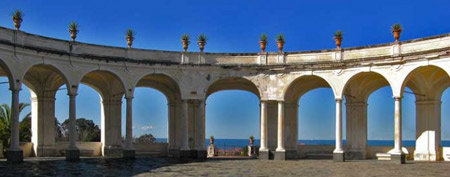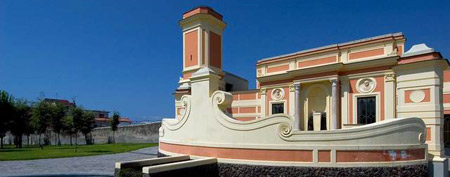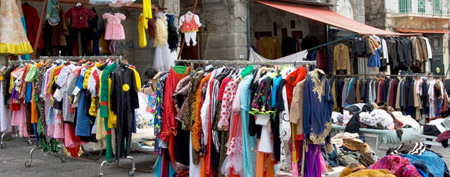Herculaneum and neighbour places

Villa Campolieto
Location: Corso Resina 283
Hand-built during the 18th Century and commissioned by Luzio di Sangro, the duke of Casacalenda and Prince Campolieto. Designed in 1755 by the architect Mario Gioffredo, it was completed by Michelangelo Giustiniani and later by Luigi Vanvitelli. One particular architectural feature is the Rotunda, characterised by arches on a row of Tuscanic columns which create a double walk on two storeys together with the upper terrace: one opens onto the garden and the other onto the panorama of the Gulf. Currently the villa is used as premises for a top managerial training school and it is also the venue of concerts, shows and exhibitions at different times of the year. The garden and some of the finely decorated rooms are open to the public, entrance is free of charge. It hosts a museum with acoustic guide facilities.

Villa Ruggiero
Location: Via A. Rossi 40
Hand-built in the 18th Century and commissioned by Baron Enrico Petti; it became the property of the Ruggiero family in 1863. The villa, situated at the foot of Mount Vesuvius, a typical example of a "rustic home", is small in size and is arranged in a single building developed over three floors, where stucco adornments prevail. It is the seat of the public library, rich in valuable texts, and of a museum with acoustic guide facilities.

Villa Favorita
Location: Corso Resina 291
The 18th Century building, built by Ferdinando Fuga, referred to as the "Favorita" (favourite) by King Charles of Bourbon as a tribute to queen Maria Carolina of Austria, features an unusual planimetric layout inspired by the local late Baroque production. The villa overlooks immense grounds where Leopold the Prince of Salerno had a building constructed for guests and games which he opened to his subjects on holidays. In the 1800s, it was the residence of Ismail Pascià, vice-king of Egypt, who had some of the rooms decorated in Turkish style. The large area of the Villa's lower grounds or "Parco inferiore" ends towards the sea with the Bourbon berthing built to make it easy to get to. It hosts a museum with acoustic guide facilities.

Crèator Vesevo
Location: Contrada Osservatorio
A permanent exhibition on the slops of Mount Vesuvius, an open-air museum where contemporary art merges with nature. For the first time in history, the Volcano beholds creations which rise out of the natural compressions of lava: ten of the most world-famous European artists sculpt lava stone to create an artwork destined to remain along the road that leads from Herculaneum to the highest slopes of Mount Vesuvius.

Resina Market
Location: Piazza Pugliano
Resina market, which began during WWII, when objects and clothes stolen from the American convoys were traded there, is the most famous markets for used objects and second-hand clothes and military surpluses in Central and Southern Italy: it is the paradise of vintage clothing. Very popular among youths, from designers to costume designers from Cinecittà film studios: to mention just a few, this is where the clothes from the films "I cento passi" (The Hundred Steps), "La meglio gioventù" (The Best of Youth), "Prima dammi un bacio" (Kiss Me First) were bought.